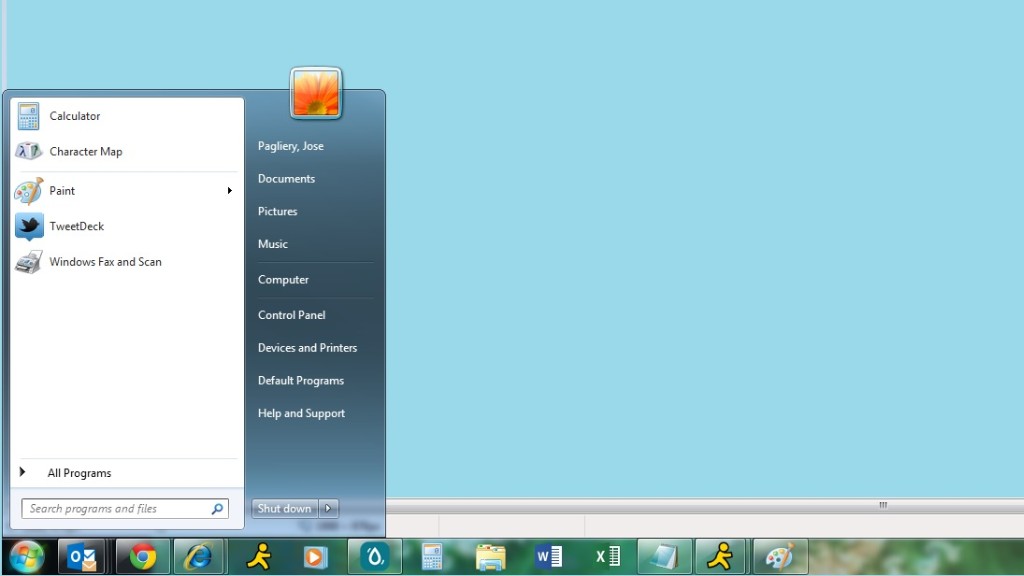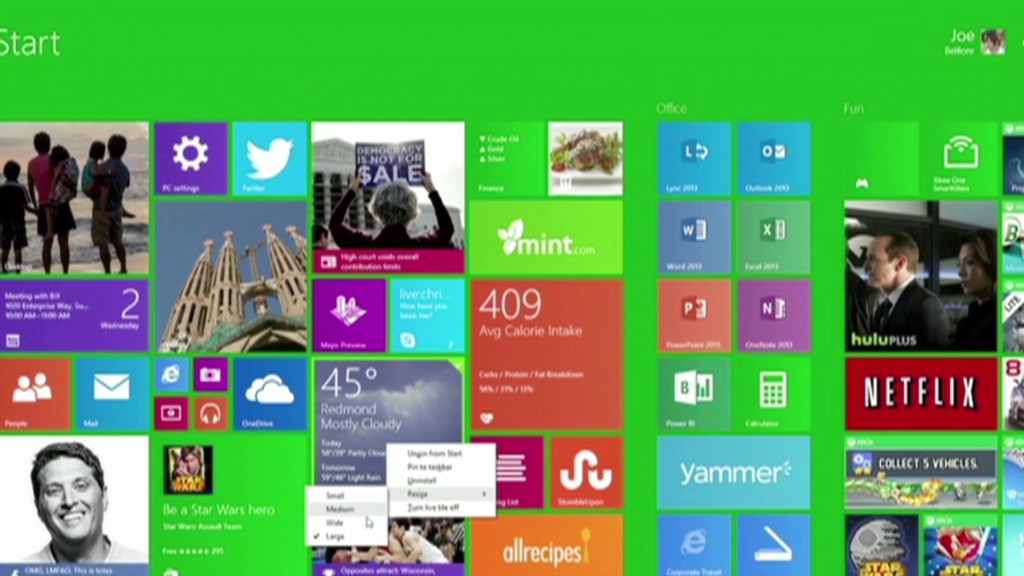
Windows 8 is going to start behaving a little more like Windows 7, but that doesn't mean Microsoft is giving up on the idea of a tablet-friendly operating system.
At its Build developers conference in San Francisco on Wednesday, Microsoft announced a trio of new features for Windows 8.1 that had a decidedly "old-school" feel: First, Windows will get a bunch of tweaks that make it easier to use with a keyboard and mouse. Second, Microsoft announced that Windows 8-style "Modern" apps will run in a window in the traditional desktop interface. Third, the Start menu -- the ultimate signifier of "old" Windows -- is eventually coming back.
But the tweaks are less about Microsoft (MSFT) running away from its controversial Windows 8 redesign and more a concession that the company tried to transition traditional PC users over to the radically different design of Windows 8 too quickly.
And if anything, Microsoft's decision to cater to these unconvinced users isn't a step backwards -- it's a ploy to reel them in.
Related: Microsoft makes Windows 8.1 more mouse-friendly
Despite the changes, Microsoft isn't phasing out or decreasing the presence of Windows 8's new design. In fact, these forthcoming features will actually make the Modern design more visible throughout the operating system.

It's a more gentle way of nudging the entrenched Windows 7, Vista and XP users towards change. And catering to these users could help jumpstart Microsoft's lagging ecosystem of Modern apps, which is lagging considerably behind iOS and Android.
One of the most revealing, big-picture moments of Microsoft's latest Windows announcements was that developers can now build a single app that runs on all three major Microsoft platforms - Windows, Windows Phone, and Xbox.
That is a major undertaking on Microsoft's part and it's all built around the new Modern style of Windows. That means Microsoft is committed to its new design vision for the foreseeable future. Combined with Microsoft's embrace of its legacy PC features, a strategy starts to take shape about how Microsoft will compete against Apple (AAPL) and Google (GOOAV).
Related: Meet Cortana, Microsoft's Siri
Microsoft has the right technological pieces in place with its phones and tablets -- and a lot of users. But all of those users are sticking to older versions of Windows and aren't embracing Microsoft's mobile products.
By letting developers build a universal app, and making that app accessible and palatable to traditional desktop users, it could create a perfect storm. Microsoft's Windows user base is helping to flesh out its mobile app ecosystem -- without actually using the mobile products. And with more apps available for its smartphones, more people might start buying them. Problems solved.
Of course, that outcome is anything but certain, and failure is a very real possibility. But Microsoft's decision to bridge the gap between its past and present is neither retrograde, nor is it blindly pointless.

